Have you ever watched a hamster sitting on his hind limbs still stretching the front ones to grab for something tasty? Perhaps you have seen one chase the ball around this and that wall to move through a mini-maze in style. So, you are probably wondering if these cute little traits you observe are simply cute behaviors of a hamster or not – Well, let me tell you, these are the outcomes of hamster training.
Training your hamster isn’t limited to teaching them some tricks which are very an interesting thing in this case! It is a great opportunity to give a child something interesting to think about and also help him to keep his brain working all the time and be quite creative. This form of bond improves interaction between you and your companion while delivering outcomes that are beneficial for the two of you.
Just picture the sheer bliss in which you realize that your hamster has grasped a certain ability, and the satisfaction of knowing it in both you and the hamster. Therefore, if you are seeking an opportunity to open a new page in your interaction with your pet and to provide your little hamster with a tough mental workout, training is the way to go.
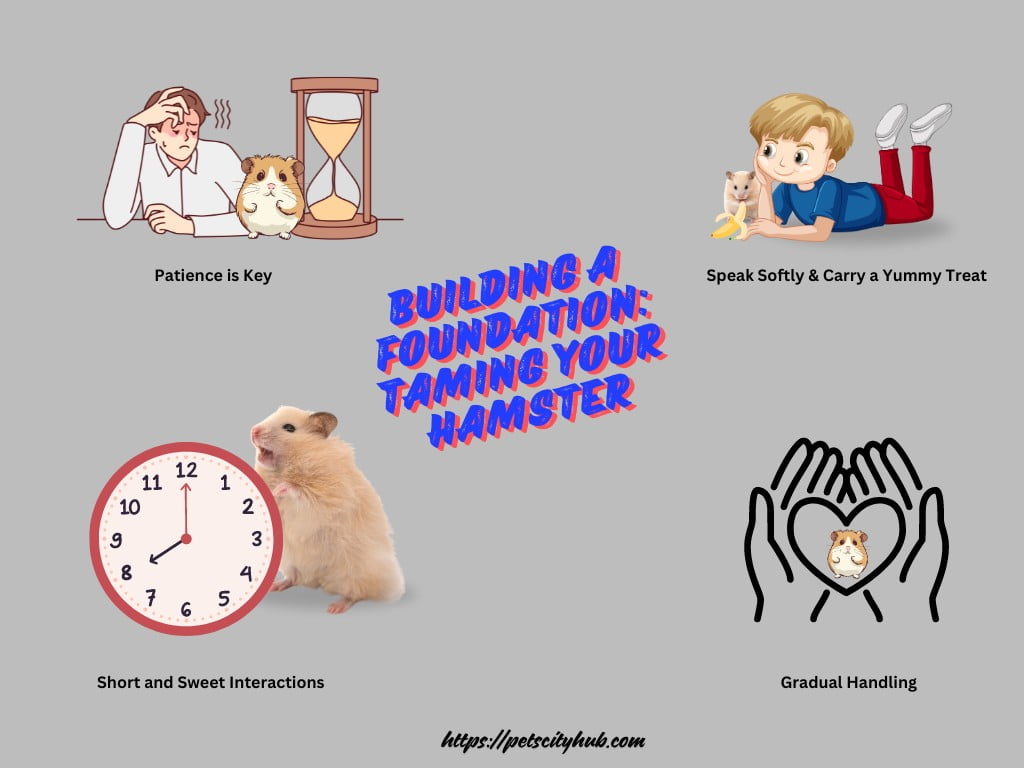
Building a Foundation: Taming Your Hamster
Before diving into the exciting world of training tricks, establishing a trusting relationship with your hamster is crucial. Think of it like building a strong foundation for a house – you wouldn’t start construction on shaky ground, would you?
Taming your hamster allows them to feel comfortable and safe in your presence, making the training process much smoother and more enjoyable for both of you. Here are some initial steps to tame your hamster:
Speak Softly and Carry a Yummy Treat
Start by letting your hamster get accustomed to your voice. Talk to them gently as you move around their cage. Offer small, enticing treats from your hand, allowing them to sniff you and get comfortable with your presence.
Patience is Key
Don’t rush the process. Allow your hamster to approach you at its own leisure. Avoid making any rapid movements or loud noises that could frighten them.
Short and Sweet Interactions
Schedule short, positive interactions throughout the day. Once your hamster seems comfortable taking treats from your hand, try gently stroking their back for a few seconds before returning them to their cage.
Gradual Handling
As your hamster becomes more confident, gradually increase the length of handling sessions. Pick them up gently, supporting their entire body, and hold them close to your body for short periods.
Remember, consistency and patience are key when taming your hamster. By following these steps and linking your presence with positive experiences, you’ll create a strong foundation for successful training in the future.
Basic Commands: Building Communication
Now that your hamster feels comfortable with you, it’s time to embark on the exciting journey of teaching them some basic commands! Think of it as building a secret language between you and your furry friend. Here are some fun tricks to get you started, with clearer explanations for each step:
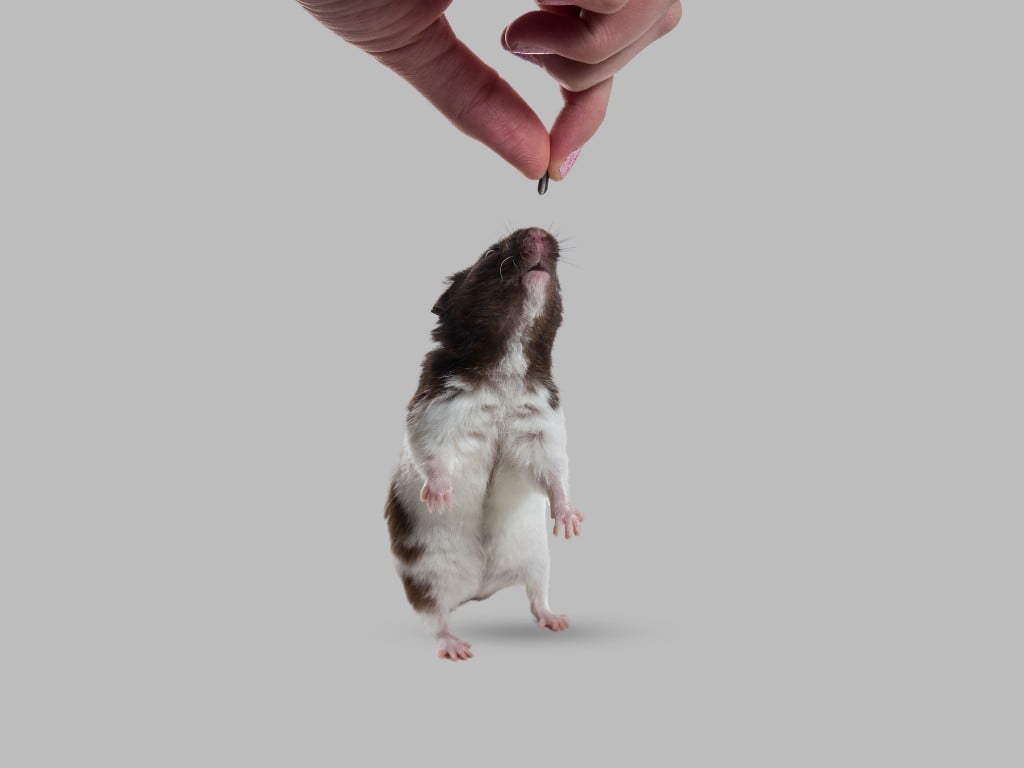
Teach Your Hamster How to Stand
Hold a small, irresistible treat above your hamster’s head, just out of reach. As they naturally reach for the yummy reward, they’ll rise on their hind legs. Say a clear marker word, such as “yes!” as soon as they stand, even if only for a second and immediately give them the treat.
This positive reinforcement helps them associate standing with a delicious reward. Repeat this process several times in short training sessions (around 5-10 minutes) to solidify the connection between standing and the treat.
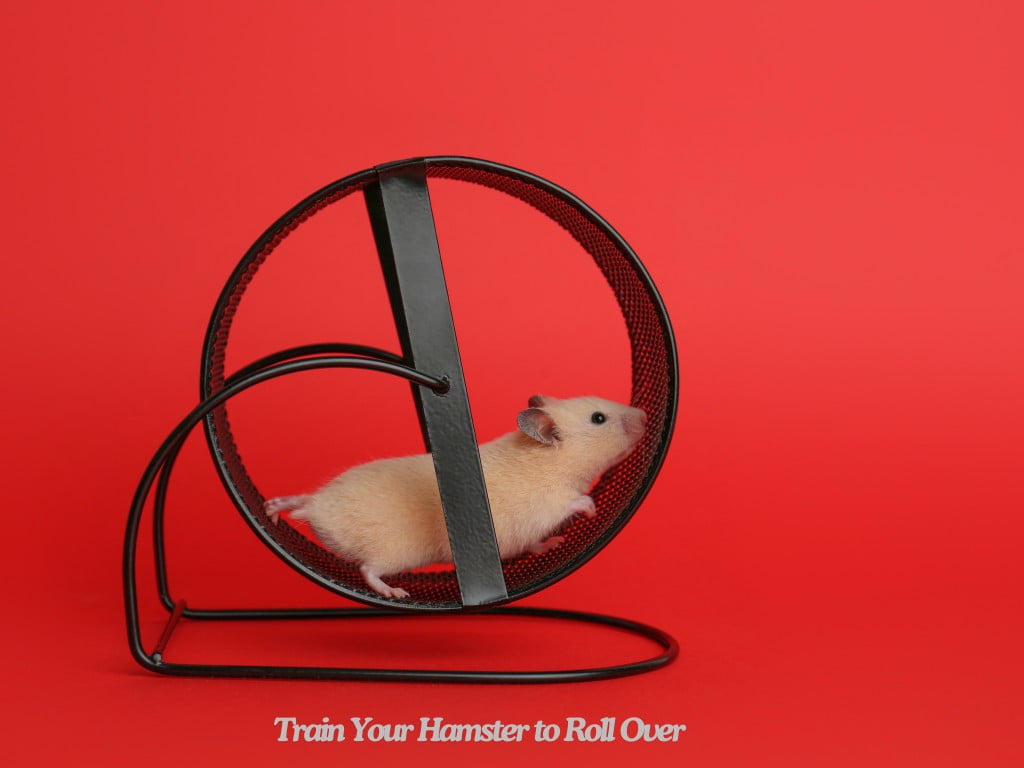
Train Your Hamster to Roll Over
Gently place your hamster on their back while holding a treat near their nose. This might feel a little silly, but trust us, it works. As they sniff for the treat, they’ll likely roll over to reach it in a more natural motion. The moment they complete a full roll, praise them with a cheerful “Good job!” and offer the treat.
Remember, patience and positive reinforcement are key. If your hamster seems hesitant, don’t force them. Try again later and gradually guide them with the treat if needed.
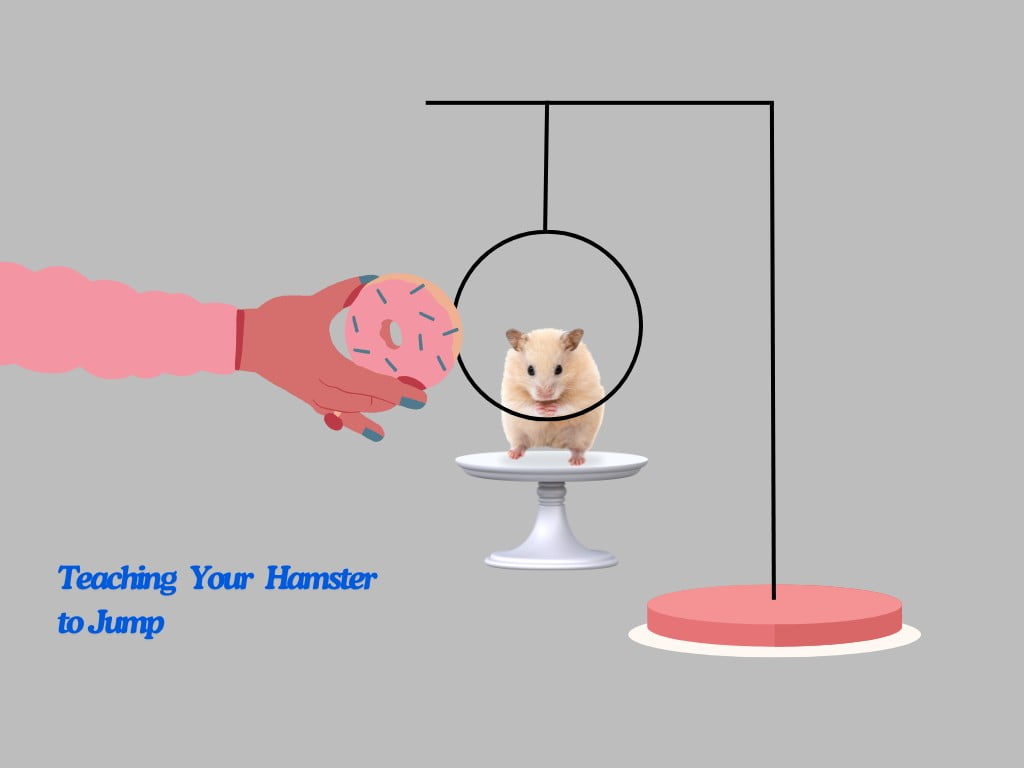
Teaching Your Hamster to Jump
Want to see your hamster defy gravity (in a miniature way)? Hold a tasty treat above a small obstacle, like a book propped open a tiny bit. Encourage your hamster to jump for the treat by moving it slightly back and forth. The moment they successfully leap over the obstacle, shower them with praise and a reward.
This not only teaches them to jump but also provides some much-needed exercise. Start with a low obstacle and gradually increase the height as your hamster gets comfortable.
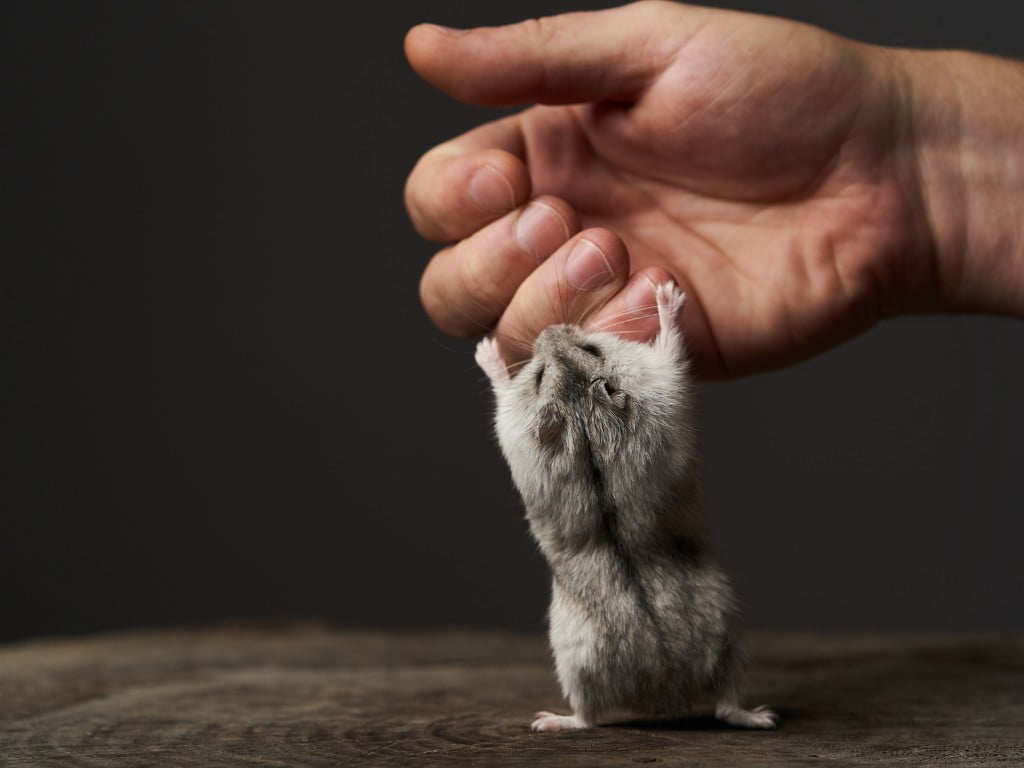
Train Your Hamster to Climb on Your Hand
This trick is all about positive association. Hold your hand flat with a treat placed on it, enticing your hamster to climb onto your hand to reach the delicious reward. When they climb on, even if it’s only a paw or two, give them a cheerful “Yes” and offer the treat.
With repetition, your hamster will learn that climbing your hand leads to yummy snacks, be patient and keep the sessions short and engaging to avoid overwhelming your furry friend.
Advance Tricks
Once your hamster has mastered the basic commands, it’s time to level up the training game. With consistent practice and positive reinforcement, you can teach them some truly impressive tricks.
Train Your Hamster to Navigate in a Maze
Transform a cardboard box into a miniature maze with small openings. Scatter some treats throughout the maze and encourage your hamster to navigate their way through to find them. This trick not only challenges their problem-solving skills but also provides excellent mental stimulation.
Teach Your Hamster to Spin in Circles
Hold a treat near your hamster’s nose and slowly guide them in a small circle. The moment they complete a full circle, reward them with the treat and praise. With repetition, they might learn to associate the hand motion with circling and perform the trick independently.
Remember, the key to success lies in tailoring tricks to your hamster’s individual personality and interests. Some hamsters are naturally more curious and adventurous, readily taking on new challenges. Others might be more cautious, requiring extra patience and encouragement.

Litter Box Training
Litter box training your hamster isn’t just about teaching them a cool trick – it offers some practical benefits for both you and your furry friend. A litter box provides a designated spot for your hamster to do their business, making cage cleaning a breeze. Imagine a cage where waste is contained in one spot, compared to having to sift through bedding everywhere.
Plus, a litter box promotes a more hygienic environment for your hamster, reducing ammonia buildup and potential odors. Getting started is simple.
Place a small, shallow box filled with hamster-safe litter (like shredded paper or aspen shavings) in a corner of your hamster’s cage. This will be their designated bathroom spot. Here’s a little trick to jumpstart the process: gently pick up a few of your hamster’s droppings and place them in the litter box.
This helps establish the scent and encourages them to use the box instinctively. Remember, consistency is key. Keep the litter box clean and replace it regularly to maintain a fresh and inviting environment for your hamster.
At the end, remember that training your hamster is a rewarding journey that strengthens your bond and keeps their minds sharp. By laying a foundation of trust through taming and using positive reinforcement throughout the training process, you’ll be amazed at what your furry friend can learn. Start with basic commands like standing or jumping, then gradually progress to more complex tricks based on your hamster’s unique personality.
Most importantly, be patient, celebrate small victories, and shower your hamster with praise and treats. We encourage you to share your hamster training successes and challenges in the comments below – let’s create a community of proud hamster trainers.






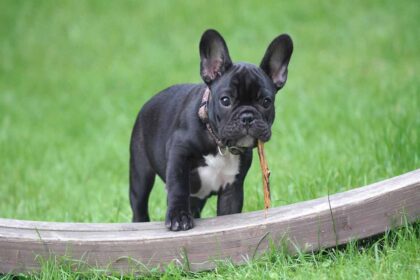







Comments are closed.